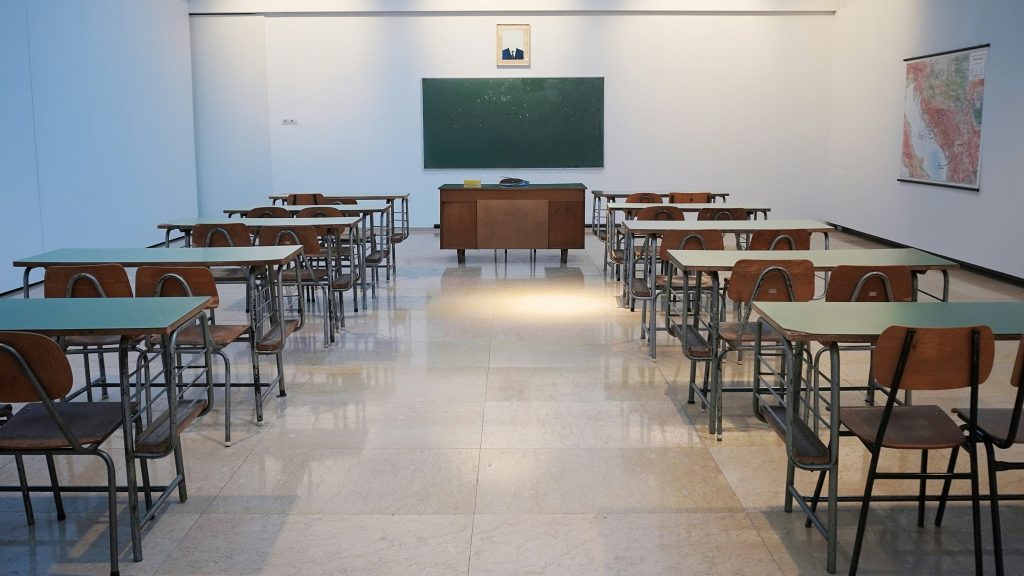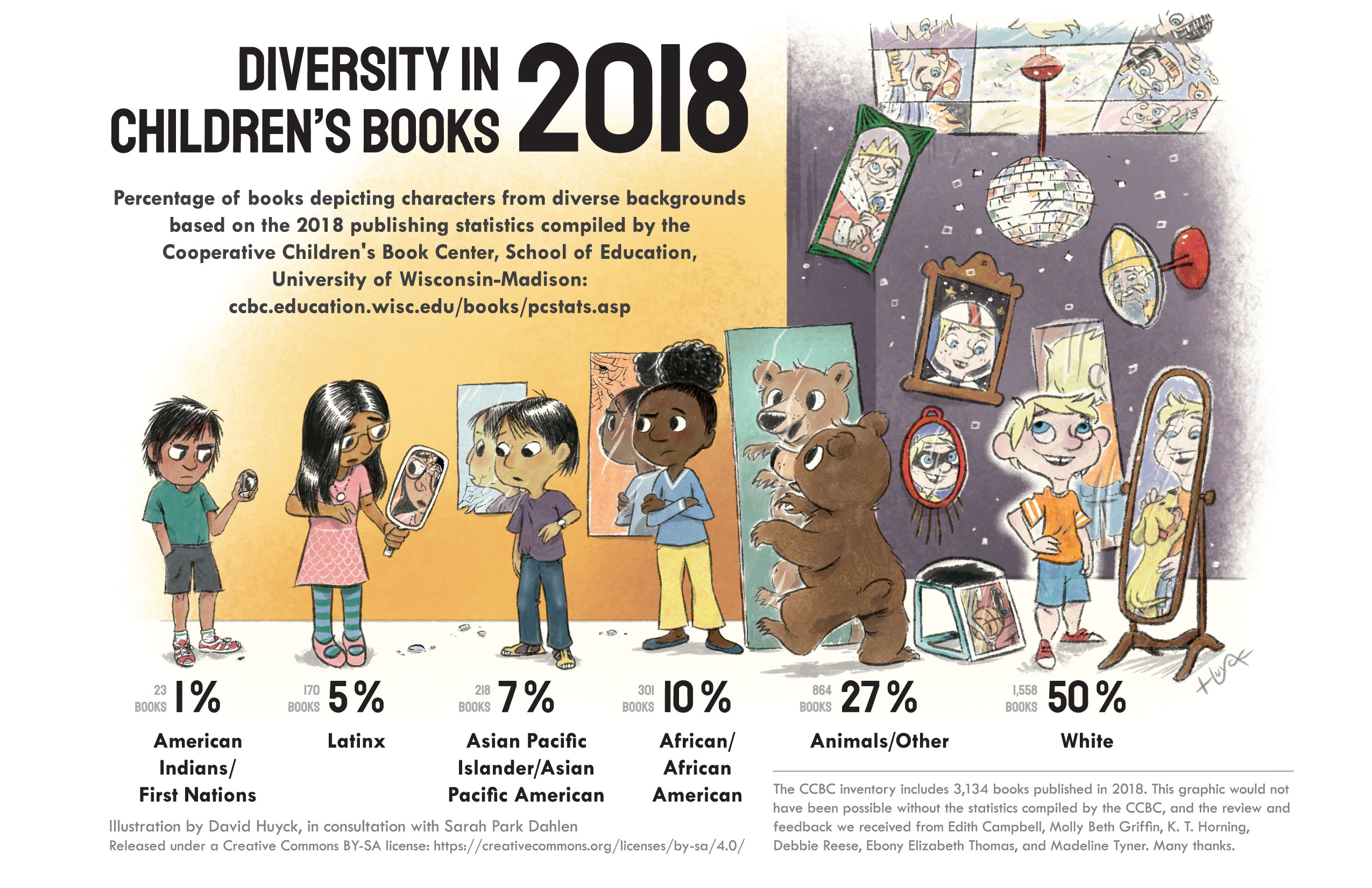Qualities of Effective Teachers
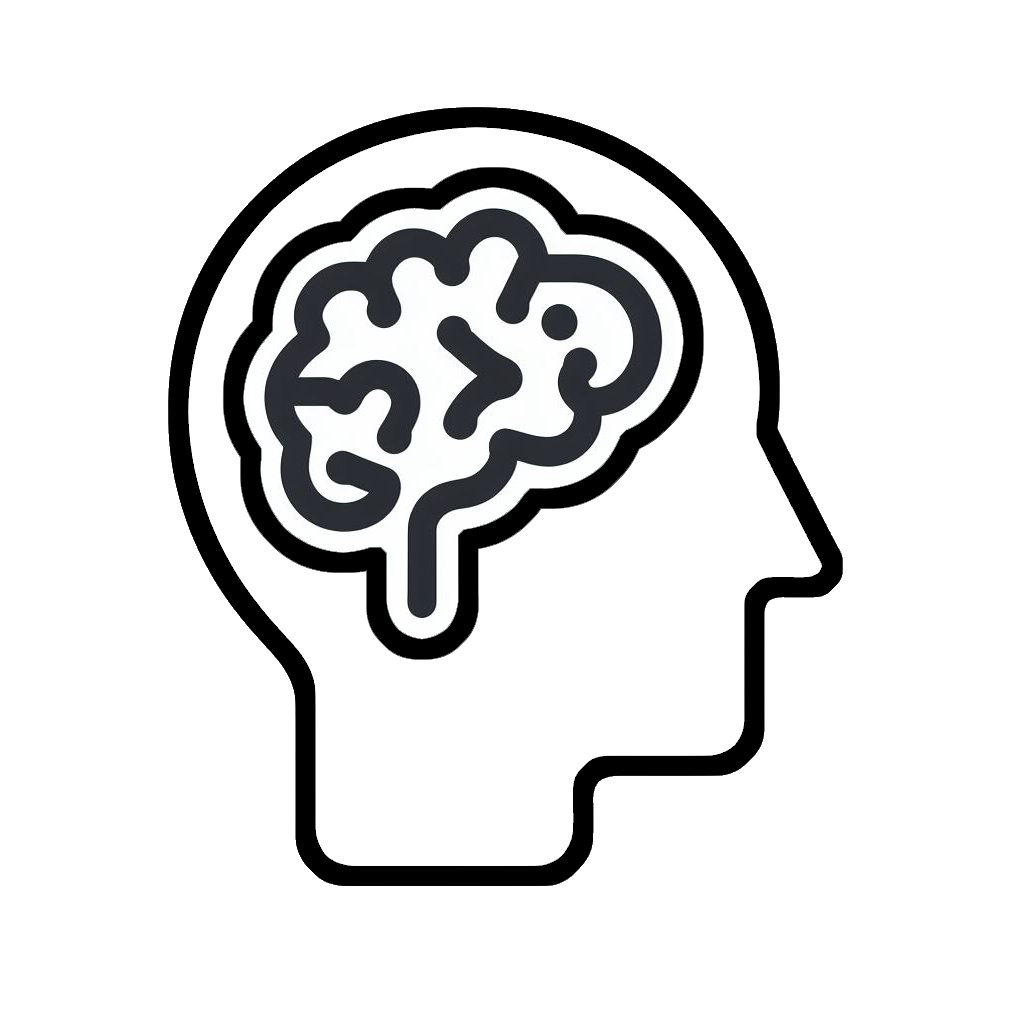 Preparing to Learn
Preparing to Learn
Qualities of Effective Teachers
Before discussing the qualities of effective teachers, complete the assessment below to check what you already know, what you need to unlearn, and what you might be interested in exploring further.
While effective teachers may tend to hold similar traits, effective teaching is informed by more than teachers’ traits. Rather, effective teaching is informed by standards and policies, including national standards (like InTASC Model Core Teaching Standards), state standards, school district policies, and school policies. That is not to suggest that standards and policies are the only things informing effective teaching; instead, they are the lenses through which teachers conduct their work and, when intentionally applied, can lead to them being effective in their roles. This chapter will introduce you to what an effective teacher looks like by exploring standards, traits, identity, and teaching strategies. As you go through this chapter, consider the values you hold as a teacher in training and use this to reflect on the kind of teacher you hope to become.
Qualities of Effective Teachers
Shaped by National Standards, Like InTASC[1]
Teachers must adhere to national standards to be licensed teachers. These national standards are often informed by effective teaching practices. One example is the InTASC Model Core Teaching Standards.
The 10 InTASC standards model core teaching practices that high-quality K-12 teachers should be able to demonstrate as effective teachers. Originally released in 1992, these standards were created to help guide early-career teachers, but the group realized these characteristics apply to all teachers. In 2011, InTASC revised and expanded the standards to include all teachers; 174 specific standards called “Learning Progressions” were added under each broad standard in 2013. The 10 standards are explained in further detail below and are broken into the four overarching categories of the standards.
Professionalism & Dispositions
The last category of InTASC standards focuses on professional responsibility. Teachers are held to very high standards as professionals because of their influence on shaping students and their futures through education. Another reason teachers are held to high standards is because they are inherently expected to be role models, both within and beyond the classroom, due to their roles as teachers. Therefore, there are certain interpersonal skills or dispositions that teachers are expected to demonstrate as professionals.
 Deeper Dive
Deeper Dive
Social Media Use
While there is no standardized guidance for a teacher’s use of social media as the school districts determine this, there are some best practices you can adhere to that can help guide your social media use. Additionally, you will want to be aware of and follow your district’s guidance for using social media.
Dispositions for teaching are important to consider as you explore and develop the teaching profession. Reflecting on your dispositions and how they align with a career in education is important to consider now, early on in your teacher preparation program. Consider the many dispositions for teaching to begin reflecting on ones that you are pretty good at and want to grow on throughout your educational journey.
One challenge of dispositions is that research has yet to establish an exact set of non-academic qualities teachers must demonstrate to be successful (CAEP, 2020a). Therefore, expectations of which dispositions should be observed will vary. Here are some valuable examples of dispositions to possess as a future teacher.
Many of these dispositions and expressions of professionalism are culturally bound. For example, tattoos may need to be covered in some school districts, while others do not mind if age-appropriate tattoos are visible. It is important to know the expectations within your local context to act accordingly.
In addition to national standards, teachers must adhere to state standards, which vary from state to state. Oftentimes, these state standards are informed by national standards.
Informed by Specific Traits
While teachers bring their identities and personalities to their teaching, they also hold similar traits that allow them to be effective in their teaching practices. This list is not exhaustive by any means, but it includes some of the traits effective teachers tend to have, which may also be traits you hope to cultivate as a future teacher.
The list below was developed from fifteen years of research conducted by Walker (2008). Through a longitudinal study, Walker (2008) asked college students to share characteristics that effective teachers tended to hold. Based on the information that was shared with him, he developed this list of 12 recurring qualities or characteristics, including compassion, respect for students, and preparedness to teach.
 Critical Perspective
Critical Perspective
Linguicism
I’m sure you have heard of lots of -isms in your lifetime: racism, sexism, classism. But have you heard of linguicism? Linguicism is defined by Skutnabb-Kangas (1988) as “unequal treatment of languages based upon power structures that privilege certain languages as having legitimacy” (Fain, 2008, p. 205). Essentially, it is discrimination based on language.
Linguicism is important in the context of teaching because students need to feel like their experiences are valued regardless of their ability to use standardized English. People often incorrectly assume that standard English is right and everything else is not (Wheeler & Swords, 2006). As Wheeler and Swords (2006) point out, “while language varieties clearly differ, difference does not signal deficit” (p. 14).
Therefore, as you work with students of all backgrounds and abilities, keep in mind that just because a student might struggle with standard English does not mean they are experiencing a deficit of knowledge; it simply means that English may not be their first language, and as a result, you as a teacher need to demonstrate more patience when communicating with the student without attributing their language abilities to their intellect.
Improved by Self-awareness

Effective teachers also demonstrate an awareness of their identities. Like students, teachers bring their identities into their classrooms. Legal scholar Kimberlé Crenshaw (1989) coined the term “intersectionality” as it refers to the many facets of an individual’s identity. The idea behind intersectionality is that many aspects of our identity, including race, economic class, and gender, overlap and intersect, creating a unique one for each individual. Our identities, and our students’ identities, are greater than any isolated characteristic. For instance, a woman’s identity goes beyond her gender; her race, religion, class, and other things affect how she experiences the world, and that is intersectionality. In the TED Talk below, Kimberlé Crenshaw explains intersectionality and its influence in educational settings.
Teachers must acknowledge their identities and demonstrate awareness of how they appear in the classroom. However, this can be challenging because we tend to surround ourselves with people with similar experiences or identities, often unintentionally. This can cause us to be socialized into certain beliefs, which we might not realize until we go outside of our circles and meet people with different beliefs and experiences.
One reason we do this is because we have a natural desire to belong, as this is something that we have done for ages to survive. This drive to survive results in our grouping of people, both consciously and unconsciously, based on our similarities and differences. Unfortunately, those same survival skills mean that we may think less of people different from us. We may think they aren’t as smart or as good at what they do or don’t do things correctly (the way we do them).
 Deeper Dive
Deeper Dive
Effective Schools and Teams
There are many things that a teacher can do in the classroom to ensure they are an effective teacher. In the same way, there are many things a school can do to ensure it is an effective place for students to learn. Below you will find resources related to effective schools and effective teacher teams.
Sometimes, we might even judge people based on their culture because it differs from ours. Judging or evaluating another culture based on your own culture is called “ethnocentrism.” If we aren’t careful, we can let ethnocentrism interfere with our professionalism as teachers. We might think a student is less capable of success in our classrooms or beyond based on our own cultural beliefs about certain characteristics. Sometimes, we assume people from certain racial, socioeconomic, ability, and other demographic groups are less capable simply because of our own expectations or cultures. We might consciously or unconsciously believe certain stereotypes or have sweeping, oversimplified generalizations about a group, and those stereotypes will filter into our interactions with our students, our expectations of our students, and our teaching in general. As Gorski (2013) reminds us, “No amount of resources or pedagogical strategies will help us to provide the best opportunity for low-income students to reach their full potential as learners if we do not attend first to the stereotypes, biases, and assumptions we have about them and their families” (p. 69).
Therefore, an important aspect of being an effective teacher is knowing yourself. Freire (1973) discussed the importance of critical consciousness, the ability to see beyond one’s own limited realm of experiences. As a result, members of mainstream groups must be especially aware of their identities and how these identities impact their teaching (Gay, 2010; Harro, 2000).
In the context of education, “whiteness is the invisible norm” (Derman-Sparks & Ramsey, 2006, p. 35), as 79% of public school teachers identified as non-Hispanic White during the 2017-18 school year (Pew Research Center, 2021). This is especially problematic given that only 47% of public school students identified as non-Hispanic White during the 2018-19 school year (Pew Research Center, 2021). Since most teachers share certain aspects of mainstream cultural backgrounds and bring them into their schools and classrooms, they often teach next door to other teachers who share those same mainstream cultural backgrounds. That is one way that cultural background can become an invisible norm.
Reflect
Diagram of Intersectionality
Where do some of your identities lie in this diagram of intersectionality? Which groups within each characteristic tend to have the most power? (For example, which racial groups tend to be the most empowered or disempowered?) What other characteristics would you add to this diagram?
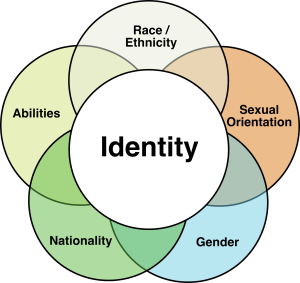
Applied Teaching Strategies, like Culturally Relevant Teaching
If you close your eyes and envision your quintessential American classroom, the odds are good that you’ll envision desks (most likely in rows) facing a teacher’s desk at the front of the classroom, situated in front of the board. What you’re envisioning might look a lot like this.
Effective teachers also vary their teaching strategies to support all of their students. While some of our learning might have occurred in a space that looked somewhat like this, many essential components are missing. The room is set up to situate the teacher as the installer of knowledge and the students as receivers of the teacher’s knowledge. This concept is known as the banking model of education (Freire, 1970). Think of it like a piggy bank: it is empty until it is filled with coins. In this case, the students are the empty piggy banks waiting to be filled with the knowledge (coins) deposited by the teacher.
Furthermore, in the image above, the room lacks any sense of community. We see white walls and a map. Where are the students–their work, their passions?
In the 1990s, Gloria Ladson-Billings coined the concept culturally relevant teaching (CRT). Instead of viewing students as empty piggy banks waiting to be filled with coins of knowledge, culturally responsive teaching recognizes that students bring a variety of experiences and knowledge with them to the classroom and that these resources can be used to design classroom experiences that are relevant to the students’ cultures and experiences. Another way to look at culturally relevant teaching is to “teach to and through [students’] personal and cultural strengths, their intellectual capabilities, and their prior accomplishments” (Gay, 2010, p. 26).
 Critical Perspective
Critical Perspective
Variations on CRT
There are many different terms for this type of teaching: culturally responsive teaching (CRT), culturally relevant pedagogy (CRP), culturally sustaining pedagogy, culturally and linguistically relevant pedagogy, and more. While there are slight differences among these theories and approaches, the overall idea is the same: powerful learning occurs when we recognize the knowledge, backgrounds, languages, and experiences that our students bring to our classrooms and design instruction around these elements.
Ladson-Billings (1995; 2001) established three critical pillars of culturally relevant teaching.
Beyond these three key pillars, there is no one “right way” to do culturally relevant teaching. You might ensure you have a classroom library full of books that reflect your students and worlds beyond your students’ worlds, although this is an ongoing challenge. The Cooperative Children’s Cook Center at the University of Wisconsin-Madison conducted a study documenting the prevalence of main characters from diverse backgrounds in children’s stories. Of the 2833 stories they counted, 50% used white main characters, 27% used animals, while African Americans (10%), Pacific Islanders (7%), Latinx (5%), and American Indians (1%) each accounted for 10% or less.
. You might ensure the math problems in your class have real-world applications and use names from your students’ families and friends. You might ensure that you are teaching multiple sides of history instead of just the side that won (who, again, tends to be the people with more power, as explained above).
There is no set curriculum that you must use to be a culturally relevant teacher. Instead, being a culturally relevant teacher involves aligning yourself with the three pillars above and knowing your students. In addition, a culturally responsive classroom creates a feeling of community in the school. Everyone supports one another’s success in a culturally responsive classroom.
While the thought of culturally relevant teaching might be overwhelming, especially if you have not experienced this as a learner, there are clear benefits from approaching your teaching this way. Gay (2010) described the potential of culturally responsive teaching as:
- validating,
- comprehensive,
- multidimensional,
- empowering,
- transformative, and
- emancipatory
Looking back at the classroom pictured earlier in this section, you can see how such an environment would have difficulty inspiring any of these characteristics! As educators, we are responsible for looking at some of our own privileges; for instance, the author of this section identifies as a White woman who grew up in a small town in a farming community. While our intersectional identities combine in different ways to make each of us the individuals we are, we benefit from certain privileges and positions of power. Sometimes, this can make us overlook ways to be more culturally relevant teachers. The most important thing to remember is that being a culturally relevant teacher is an ongoing learning process that requires us to develop instruction that builds off our students’ knowledge.
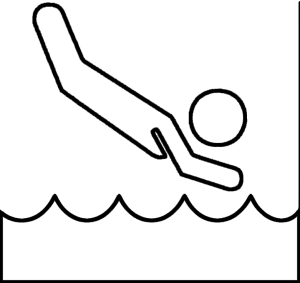 Deeper Dive
Deeper Dive
Culturally Relevant Teaching Resources
If you are interested in learning more about culturally relevant teaching practices, there are a lot of books about this topic, some of which are listed below.
- “Multiplication is for white people”: Raising expectations for other people’s children
- Culturally responsive teaching: Theory, research, and practice (3rd ed.)
- Why race and culture matter in schools: Closing the achievement gap in America’s classrooms
- The dreamkeepers: Successful teachers of African American children (2nd ed.)
- The light in their eyes: Creating multicultural learning communities
- Culturally sustaining pedagogies: Teaching and learning for justice in a changing world
Conclusion
In this chapter, we surveyed the teaching profession in the context of the United States. You learned that the teaching profession depends on the characteristics of effective teachers. In addition to these characteristics, teachers are guided by standards, such as the InTASC standards, which remind us of common characteristics of effective teachers related to our general professional demeanor as teachers. After reading this chapter, we know we must be aware of our beliefs and how they consciously and unconsciously contribute to our instruction.
References
Council for the Accreditation of Educator Preparation [CAEP] (2020a). Standard 3: Candidate recruitment, progression, and support.
Crenshaw, K. (1989). Demarginalizing the intersection of race and sex: A black feminist critique of antidiscrimination doctrine, feminist theory and antiracist politics. University of Chicago Legal Forum, 1(8). https://chicagounbound.uchicago.edu/uclf/vol1989/iss1/8/
Derman-Sparks, L., & Ramsey, P. G. (2006). What if all the kids are White? Anti-bias multicultural education with young children and families. Teachers College Press.
Fain, J. G. (2008). “Um, they weren’t thinking about their thinking”: Children’s talk about issues of oppression. Multicultural Perspectives, 10(4), 201-208.
Freire, P. (1973). Education for critical consciousness. Bloomsbury.
Gay, G. (2010). Culturally responsive teaching: Theory, research, and practice (2nd ed.). Teachers College Press.
Gorski, P. C. (2013). Reaching and teaching students in poverty: Strategies for erasing the opportunity gap. Teachers College Press.
Ladson-Billings, G. (1995). But that’s just good teaching! The case for culturally relevant pedagogy. Theory into Practice, 34(3), 159–165.
Ladson-Billings, G. (2001). Crossing over to Canaan: The journey of new teachers in diverse classrooms. San Francisco, CA: Jossey-Bass.
Schaeffer, K. (2021). “America’s public school teachers are far less racially and ethnically diverse than their students.” Pew Research Center.
Walker, R.J. (2008). Twelve characteristics of an effective teacher. Educational Horizons, 87(1), 61-68. https://files.eric.ed.gov/fulltext/EJ815372.pdf
Wheeler, R. S., & Swords, R. (2006). Code-switching: Teaching Standard English in urban classrooms. National Council of Teachers of English.
- The following chapter is revised from Foundations of American Education: A Critical Lens by Melissa Wells and Courtney Clayton, under a Creative Commons Attribution-NonCommercial-ShareAlike 4.0 International License ↵

